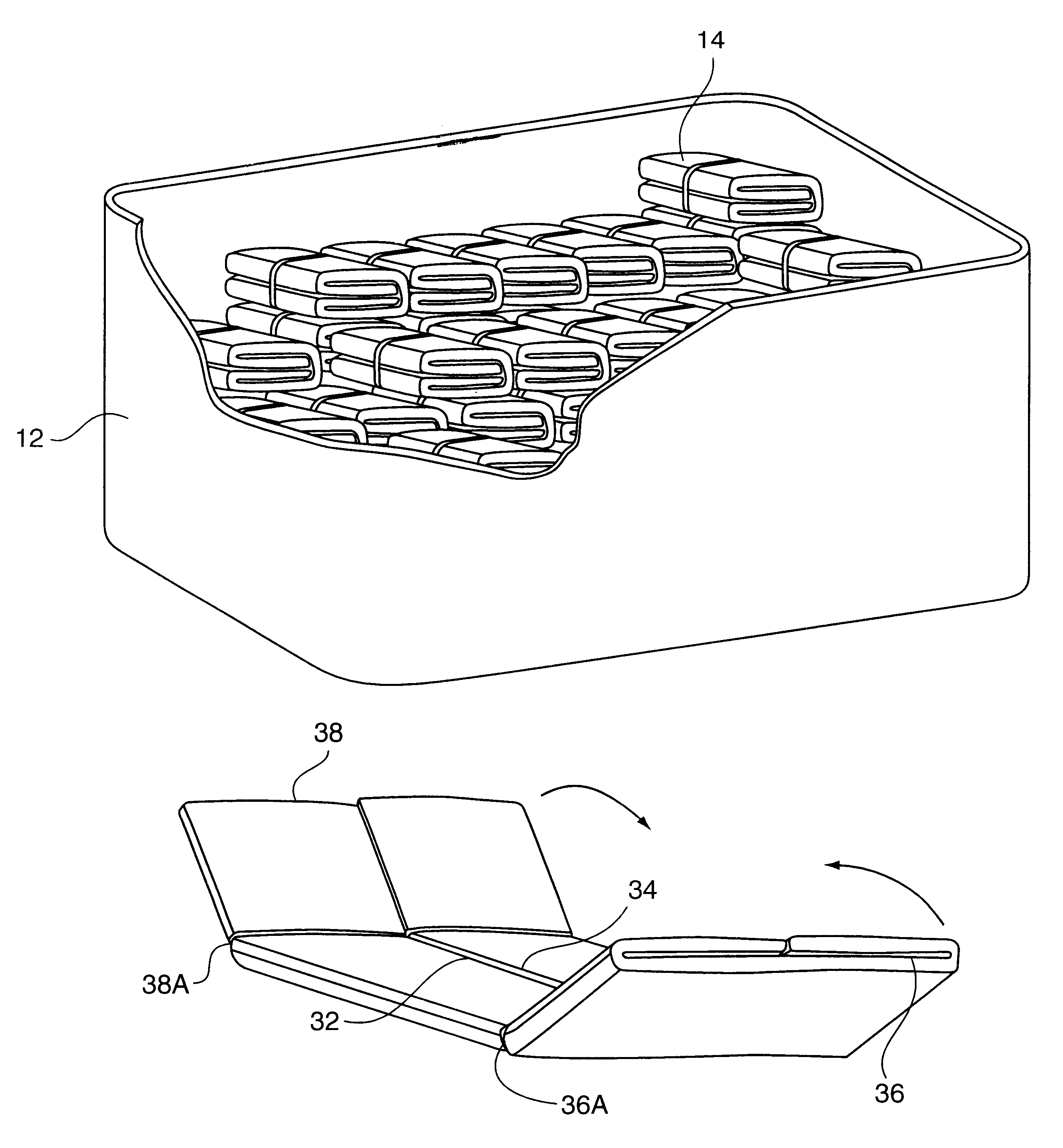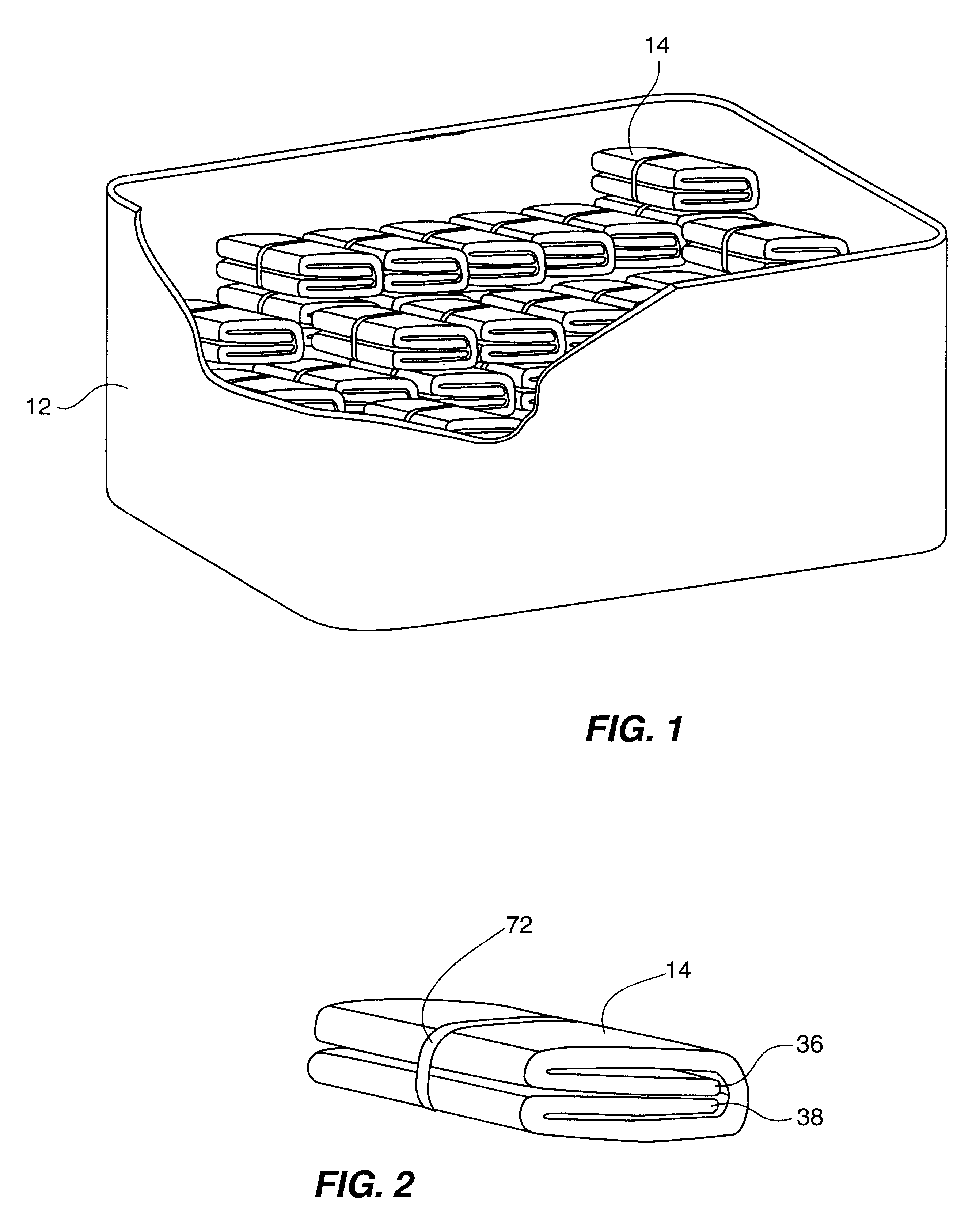Filler element for a tank
a technology for filling elements and tanks, applied in the direction of transportation and packaging, manufacturing tools, container discharging methods, etc., can solve the problems of reducing the effectiveness of filling mass, reducing the available open interior space, and not entirely successful designs
- Summary
- Abstract
- Description
- Claims
- Application Information
AI Technical Summary
Benefits of technology
Problems solved by technology
Method used
Image
Examples
Embodiment Construction
)
Turning first to FIG. 1, there is illustrated a tank 12 having a plurality of fuel permeable filler mass insert elements 14 stacked therein to form a thermal filler mass within the tank. While only a portion of the tank is shown here for clarity, in practice an entire closed tank with an access opening is used, as is well known in the art. Also, the entire tank is filled with the filler elements, such that they are in thermal contact with one another and with the tank walls. During manufacture of the tank, the insert elements may be stacked inside before the tank is closed, or alternatively, the filler elements may be manufactured in a size small enough to be inserted through an access opening of the tank after the tank is completed.
A filler element constructed in accordance with the teachings of the present invention, such as is depicted in FIGS. 2, 9 and 10, is formed from at least one sheet of expanded metallic foil mesh (see FIGS. 3 and 4), having longitudinal sections of large...
PUM
| Property | Measurement | Unit |
|---|---|---|
| thermal | aaaaa | aaaaa |
| mass | aaaaa | aaaaa |
| shape | aaaaa | aaaaa |
Abstract
Description
Claims
Application Information
 Login to View More
Login to View More - R&D
- Intellectual Property
- Life Sciences
- Materials
- Tech Scout
- Unparalleled Data Quality
- Higher Quality Content
- 60% Fewer Hallucinations
Browse by: Latest US Patents, China's latest patents, Technical Efficacy Thesaurus, Application Domain, Technology Topic, Popular Technical Reports.
© 2025 PatSnap. All rights reserved.Legal|Privacy policy|Modern Slavery Act Transparency Statement|Sitemap|About US| Contact US: help@patsnap.com



